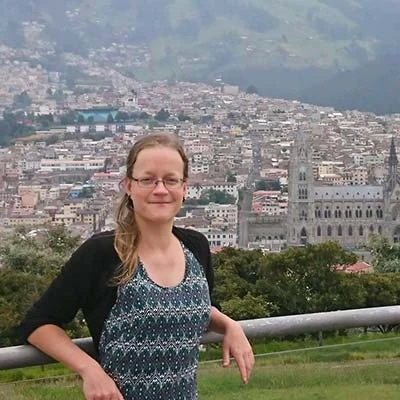
Two weeks ago carnival was celebrated in Ecuador. The holiday lasted from Saturday to Tuesday. I never had spent Carnival in Quito before, so I was excited to see what the Ecuadorian capital would offer. Various program items that I had read in an agenda from Quito Turismo sounded promising. Explore with me the colorful experience – Carnival in Quito!
Cascarones Workshop – Artificial eggs as munition
On Saturday morning, I set out for the historic center. I had read something about a guided walk from Parque Alameda, but for that one I would have had to pre-register.
So, I headed for the next place that seemed interesting: the City Museum Museo de la Ciudad, where there was supposed to be a Cascarones workshop at 11am. I got there a little early and still had a chance to look at the museum’s very vivid permanent exhibition. The tour through the history of Quito’s development is really recommendable.
After a little delay the workshop started in one of the rooms of the museum. I had not really an idea abou Cascarones so far, but soon we participants were enlightened.
In Ecuador, as in other Latin American countries, it is a tradition to throw various things at each other during Carnival. From old fruit, flour, mud to water, pretty much everything was or is on the list. The foam from the spray bottles – cariocas – is a rather recent invention (from Argentina) and replaces in some regions the other, less appetizing ammunition. Water bombs made from balloons are also popular.
Eggs are also ideal as objects to throw, but people wanted and want to avoid wasting food. Cascarones, as artificial eggs, were developed as an alternative. To elaborate them, you first need a mold. In the workshop we used a lemon. It was cut into two halves from which we removed the pulp.
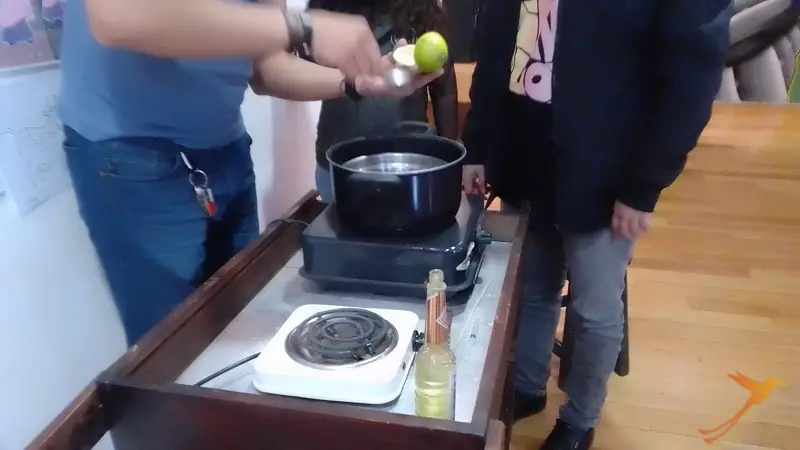
On a hotplate already simmered wax in a water bath. Nowadays, kerosene is mainly used for this purpose, beeswax was used in the past. Three tablespoons of the wax were now put into one half of the lemon peel, the other half was held on top and the whole thing was shaken vigorously. Then we put the lemons in a bucket of cold water to cool the contents. After a while, the peels loosened by themselves or were helped with a light tug. With a little luck, or after several attempts, you now had a more or less round, hollow wax egg, which ideally should have no holes.
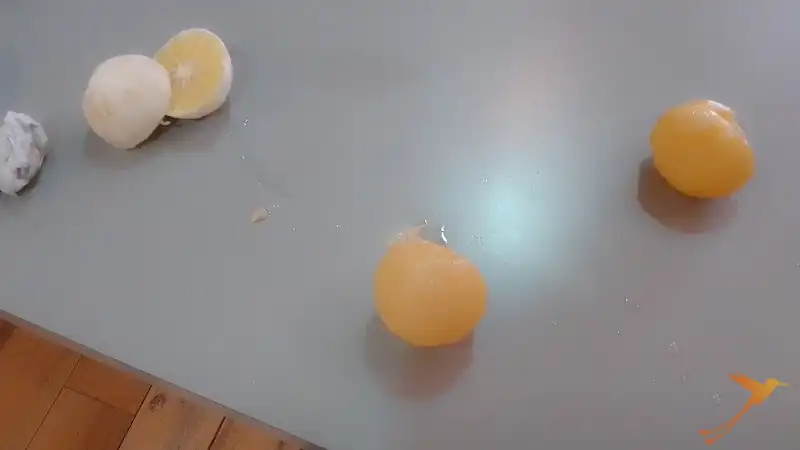
With a syringe you can now fill the egg with any liquid. In the workshop we used Agua de Florida (perfumed water) and water. In the courtyard of the museum, we squeezed the eggs on each other’s shoulders.
It was an interesting and fun workshop and by the end we all smelled a little like a perfume store.
Colorful carnival and salsa dancing in La Masriscal
After visiting the remaining part of the city museum, I walked through the lovely decorated historic street La Ronda.
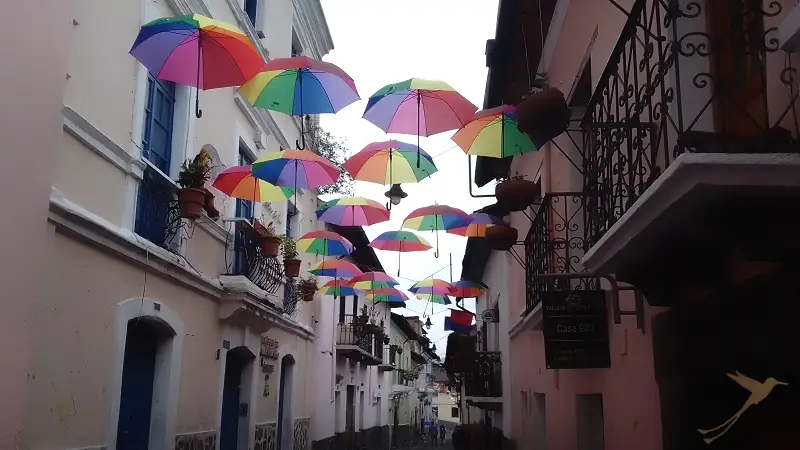
Afterwards, I took the trolebus to the Masrical, Quito’s nightlife and popular neighborhood.
There was supposed to be an event in a cultural center, but either it was already over when I arrived or it was cancelled. So, I went on to Plaza Foch, the central square of the Mariscal. Here there were some stands with handicrafts, natural cosmetics and pastries. It was nice – and tasty – but I had expected a little more in such a central place.
I rested for a while and was excited to see the “Carnaval Glow” that was announced for the evening at the Mariscal.
A chiva – a modified truck that can now be used to transport people, was supposed to head for various places according to the program. After I had been waiting a while in vain at the square Gabriela Mistral I went on to the Plaza Foch. Here was finally quite a lot going on. Five musicians in particularly decorated costumes, two of them on stilts, ensured a festive atmosphere.
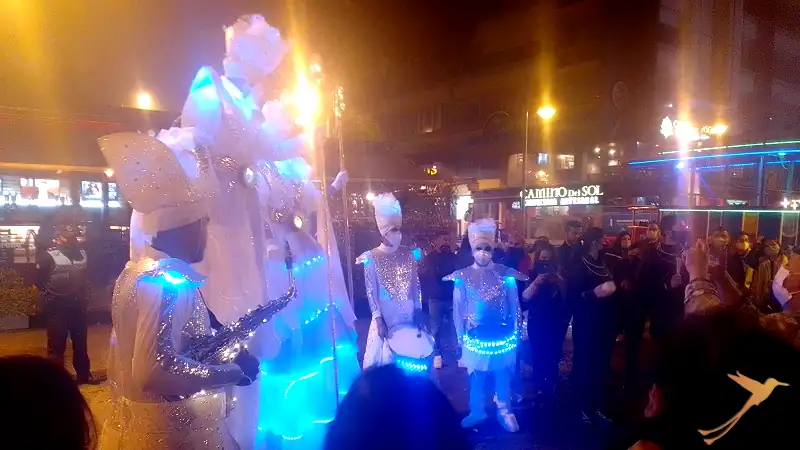
From time to time someone sprayed foam from a carioca into the crowd, other things were fortunately not thrown. After the presentation, the chiva made a few rounds and you could take pictures with the disguised musicians.
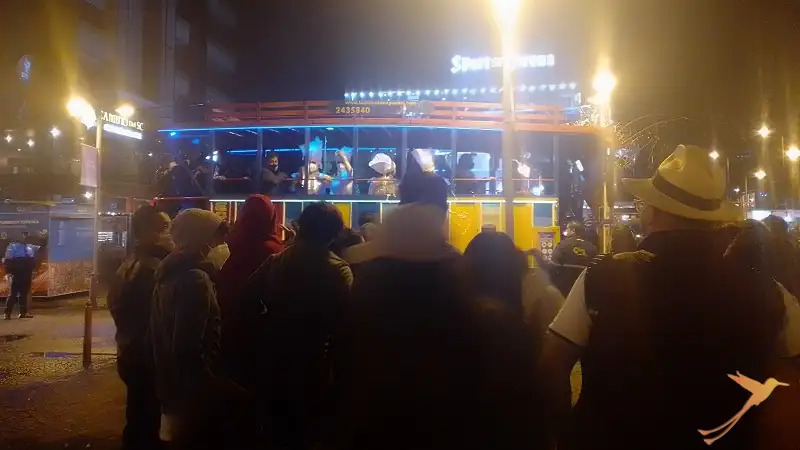
On Sunday mornings, a group of salsa dancers meets regularly at the Gabriela Mistral Park for social dancing. When I am in Quito, I like to participate in this event, as well on this Sunday. Around noon, we were briefly interrupted by a carnival parade that ended right in the park. The participants in the parade were mainly students from various schools in the neighborhood, playing various instruments as they marched down the streets.
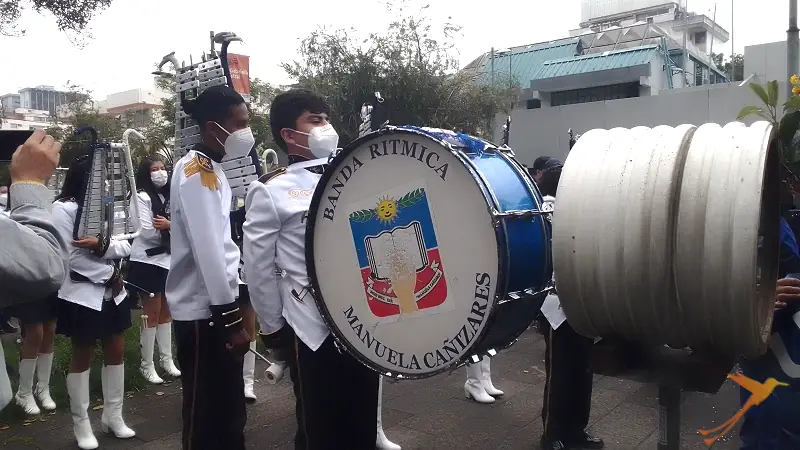
After the end of the parade, the individual groups still posed for photos and we continued dancing salsa in the meantime. Some of the carnival people, dressed up as they were, even danced along with us to a few songs. When the rain started, the carnival was complete. Because in the Andes region it always seems to rain at carnival, as I had heard.
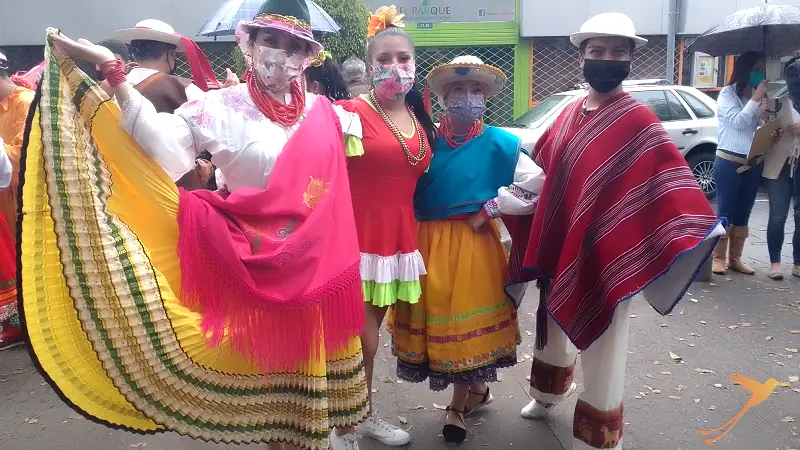
Carnival in the old town of Quito with a lot of foam and sun
On Monday, various carnival parades in the old town of Quito were on the program – the crowning finish of the carnival festivities. So, in the morning, with exceptionally bright sunshine, I headed to the old town. I arrived at the Plaza Grande just as the first part of the parades approached from Chile Street. In sunlight, the varied costumes looked even more colorful.
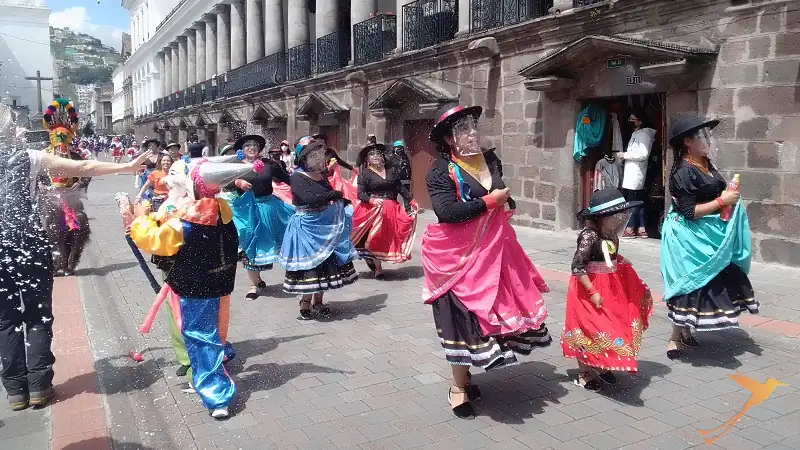
Although I have seen many such processions and parades, I consider the detailed costumes and the various, sometimes quite acrobatic choreographies always exciting. At the carnival in Quito, of course, the foam from the cariocas could not be missing. Especially the children sprayed enthusiastically in all directions and sometimes directly onto the parade participants, some of whom were already completely white. It was certainly a challenge for them to follow the choreography in the strong sunlight and with all the foam.

Personally, I’m not a fan of the chemical foam, especially I wonder what happens in the end with the countless empty spray bottles. But (still) the cariocas are an important part of the carnival tradition, maybe a more ecological alternative will be invented one day.
All in all, I enjoyed the carnival holidays in Quito very much. Although I would have expected some more program points for a capital city, the days were a good mixture of celebrating and relaxing, of fun and culture. In this sense – Que viva el Carnaval!







